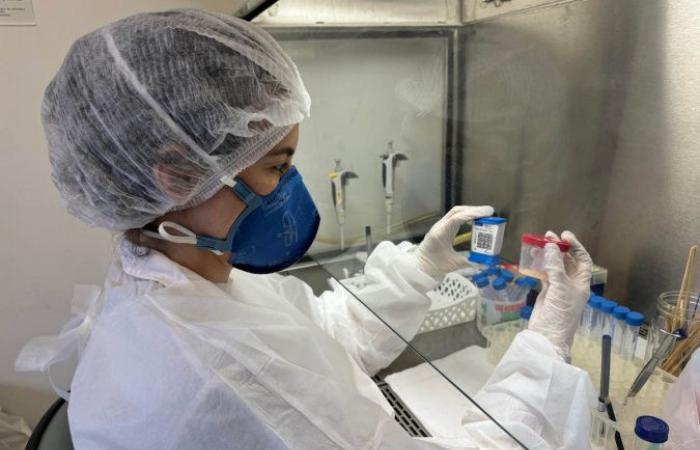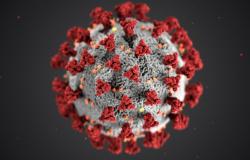A disease that has a vaccine, treatment and cure still kills thousands of people every year around the world: tuberculosis. In the Northwest region of Paraná, work to prevent and raise awareness on the topic goes through the Teaching, Research and Clinical Analysis Laboratory (Lepac) at the State University of Maringá (UEM), which is a reference in the diagnosis of the disease.
Located on the university’s main campus and linked to the Health Sciences Center (CCS), Lepac has an agreement with the State Government to serve the 30 municipalities of the 15th Health Region. In suspected cases of tuberculosis, however, the laboratory does exams for the entire macro-region, which totals 115 municipalities. In 2023 alone, Lepac carried out 1,604 Rapid Molecular Tests (TRM). Almost 10% of the total – 149 cases – tested positive.
Treatment for those positive occurs at another front of UEM’s efforts to combat tuberculosis – the Hospital Universitário Regional de Maringá (HUM). A reference in the treatment of various infections, the hospital treated 119 suspected cases of tuberculosis in 2023. Of these, 27 were initially confirmed and 19 were discharged, in addition to two dropouts, one death and five changes in diagnosis.
According to professor at the Department of Medicine (DMD) and infectious disease doctor Maria Emilia Avelar Machado, early diagnosis is one of the main measures in combating the disease, an important warning on this World Tuberculosis Day. “The sooner the diagnosis is made, the better for the patient and the lower the risk of infecting other people, especially those closest to them. Tuberculosis is treatable and curable,” she says.
Another concern for HUM professionals is ensuring that the treatment is correct and complete. Improvement in symptoms during the first few days of medication may lead patients to stop treatment hastily. This attitude can increase the resistance of bacteria, reducing the chances of a cure.
Each year, the HUM Epidemiological Surveillance Center (NVE) prepares a bulletin with official data and a survey of the municipalities and neighborhoods where tuberculosis patients originate. Socioeconomic factors are also surveyed, such as age, income and consumption habits, as well as other risk factors associated with infection, which allows for better mapping of the disease in the region. The 2023 data has already been collected, and the new document is already being prepared.
TESTS – TRM, applied at HUM, is capable of detecting the DNA of the bacteria that causes the disease directly in the patient’s sputum sample. The result is ready in around two hours. At Lepac, the sample is analyzed by GeneXpert, equipment provided to the laboratory by the Ministry of Health in 2018. The device offers high sensitivity for detecting tuberculosis, as well as faster release of results compared to the sputum smear test – visualization of the bacteria under the microscope – which has been used for over 100 years.
According to the professor at the Department of Clinical Analysis and Biomedicine (DAB) and coordinator of Lepac, Regiane Bertin de Lima Scodro, the laboratory also cultures the patient’s clinical sample and tests the susceptibility to drugs used to treat the disease. The procedures help to identify whether the bacteria detected are resistant to the antibiotics most used to combat tuberculosis.
The equipment used for this process is the BD BACTEC MIGT, a system present in only two laboratories in Paraná – in addition to Lepac, at the Central State Laboratory (Lacen), in São José dos Pinhais. “The automated method is more sensitive when compared to manual examination. This culture system, which allows the bacteria to grow, guarantees a high-quality and faster exam to meet the needs of tuberculosis patients”, highlighted the coordinator.
A challenge for laboratory professionals is asymptomatic cases of the disease. According to the coordinator, many people can be infected even without showing symptoms, in a condition called “tuberculosis infection”.
For these cases, Lepac implemented, in 2022, the IGRA exam, a test carried out on the patient’s blood. The method identifies the component of the infected organism’s immune response and, therefore, allows greater precision in the diagnosis of asymptomatic cases. The test can be used on people who have had contact with sick people or who, for other reasons, are suspected of having an infection. The high-quality exams carried out by Lepac are, for the most part, subsidized by the Unified Health System (SUS), as a form of support for public health.
COURSES – In addition to the actions of Lepac and HUM, UEM offers undergraduate courses and postgraduate programs in the areas of Biosciences, Biotechnology, Pharmaceutical Sciences, Nursing and Medicine, which promote the training of highly qualified professionals to work in the fight against tuberculosis and other infectious diseases.
The University’s students and teachers, including Lepac and HUM collaborators, frequently carry out actions to raise awareness about tuberculosis among the population. Initiatives have already been promoted in places such as the Producer’s Fair, Parque do Ingá and the Maringá Agricultural, Industrial and Commercial Fair Exhibition (Expoingá).
UEM employees also participated in technical updates for health professionals in municipalities in the 15th Health Region of Paraná, with the aim of guiding them on the prevention and correct treatment of tuberculosis.
Within the scope of research, professors and postgraduate students develop several projects focused on prevention, diagnosis and treatment of the disease. Many of the actions have financial support from research funding agencies, such as the Coordination for the Improvement of Higher Education Personnel (Capes), the National Council for Scientific and Technological Development (CNPq) and the Araucária Foundation. These are studies of new substances that show activity against bacteria and that, in the future, could be used as a new medicine.
WORLD DAY TO COMBAT TUBERCULOSIS – The choice of the date for World Tuberculosis Day is emblematic. Exactly 142 years ago, also on March 24, German doctor Robert Koch announced the discovery of the bacteria that causes the disease, named in his honor.
More than a century later, Koch’s bacillus, with the scientific name Mycobacterium tuberculosis, still intrigues and worries doctors and researchers around the world. According to the World Health Organization (WHO) Global Report on Tuberculosis, published in 2023, almost 10.6 million people had tuberculosis in 2022. Of these, 1.3 million died from the disease.
Service:
Regional University Hospital of Maringá – Avenida Mandacaru, 1,590, in Parque das Laranjeiras, in Maringá, open 24 hours a day. You can contact HUM by phone (44) 3011-9100.
Lepac – Block K-10 of the UEM main campus, with services from Monday to Friday, between 7:20 am and 11:30 am and 1:00 pm and 5:00 pm. The laboratory telephone number is (44) 3011-4317.
Tags: Lepac UEM Hospital references fight tuberculosis Northwest region
--





